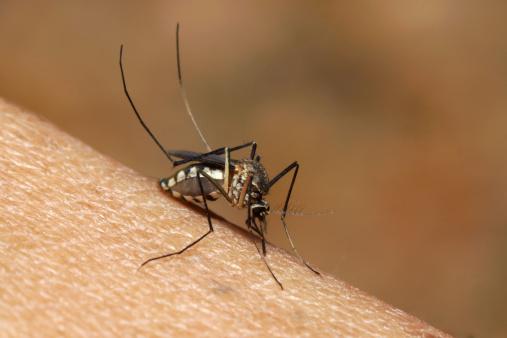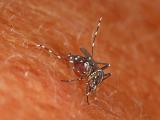The tally of dengue cases in the Americas increased fivefold from 2003 to 2013, but the fatality rate dropped a bit in the last 3 years because of improved case management, the Pan American Health Organization (PAHO) reported yesterday.
An average of more than 1 million cases were reported annually from 2009 through 2012, with more than 33,900 severe cases and 835 deaths annually, PAHO said in a press release. It said 2013 was one of the worst years ever, with 2.3 million cases, including 37,705 severe ones and 1,289 deaths. In contrast, only 517,617 cases were reported in 2003.
The data were presented this week at a dengue meeting hosted by PAHO and the World Health Organization (WHO) at PAHO headquarters in Washington, DC.
The agency blamed the continued spread of dengue on uncontrolled, unplanned urbanization, lack of basic services, poor environmental management, and climate change, among other factors. Nearly 500 million people in the Americas are at risk for the disease, PAHO said.
Drop in death rate
In the last 3 years, the dengue case-fatality rate (CFR) in the Americas fell from 0.07% to 0.05%, the agency said. It attributed the change to better clinical management of patients since implementation of new PAHO/WHO guidelines began in 2010. PAHO estimates that improvements in care prevented about 1,500 deaths last year, equaling more than 25% of all deaths from the virus over the previous decade.
Although dengue infection doesn't usually cause serious illness, there are five dengue virus serotypes, and sequential infection with different dengue serotypes increases the risk of severe illness. The newest dengue serotype was discovered in Malaysia and reported last October.
"Recognizing the lack of a vaccine or specific drugs for this health problem, countries have made major efforts to prevent deaths from dengue through timely treatment, following the new WHO recommendations," Luis Gerardo Castellanos, head of the PAHO/WHO Neglected, Tropical, and Vector-borne Diseases Unit, said in the press release.
Dengue control efforts in the Americas are guided by the Integrated Management Strategy for Dengue Prevention and Control, adopted in 2003 by PAHO and WHO Member States. The strategy calls for strengthening epidemiologic surveillance systems, strengthening laboratory capacity for dengue diagnosis, monitoring and control of the vector through integrated vector management, effective clinical management of patients, and social communication.
Mosquito control
Dengue viruses are spread primarily by Aedes aegypti mosquitoes. Marcos Espinal, director of PAHO's Department of Communicable Diseases and Health Analysis, said all government sectors, communities, and families need to work together to fight A aegypti and control the disease.
A aegypti also spreads the chikungunya virus—which began spreading through the Caribbean last December and has caused more than 60,000 illnesses so far—and the yellow fever virus, PAHO noted.
The agency said Canada, continental Chile, and Uruguay are the only countries in the Americas that have reported no dengue cases to date. In the continental United States, nearly all dengue cases were acquired elsewhere by travelers or immigrants, according to the Centers for Disease Control and Prevention.
See also:
May 29 PAHO press release



















